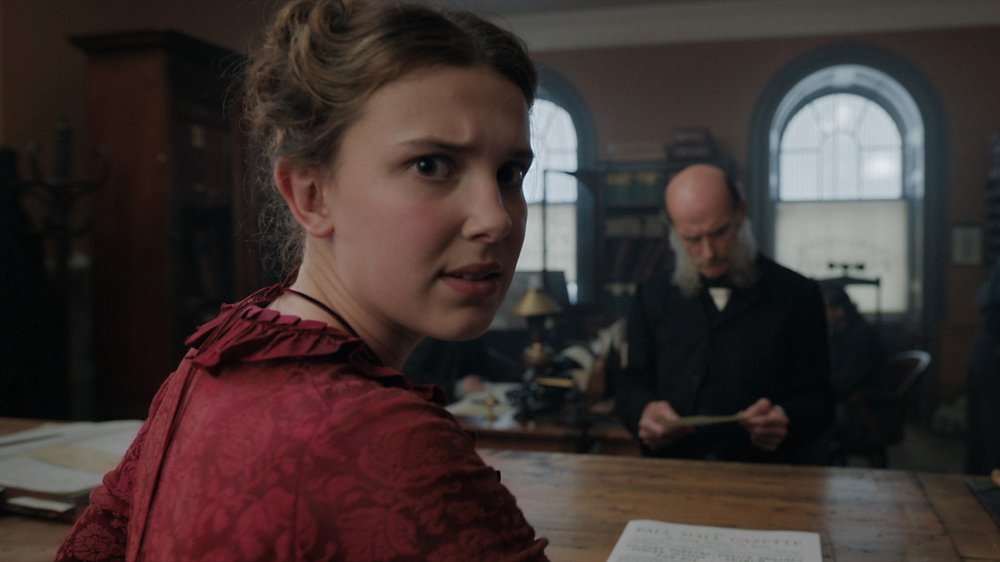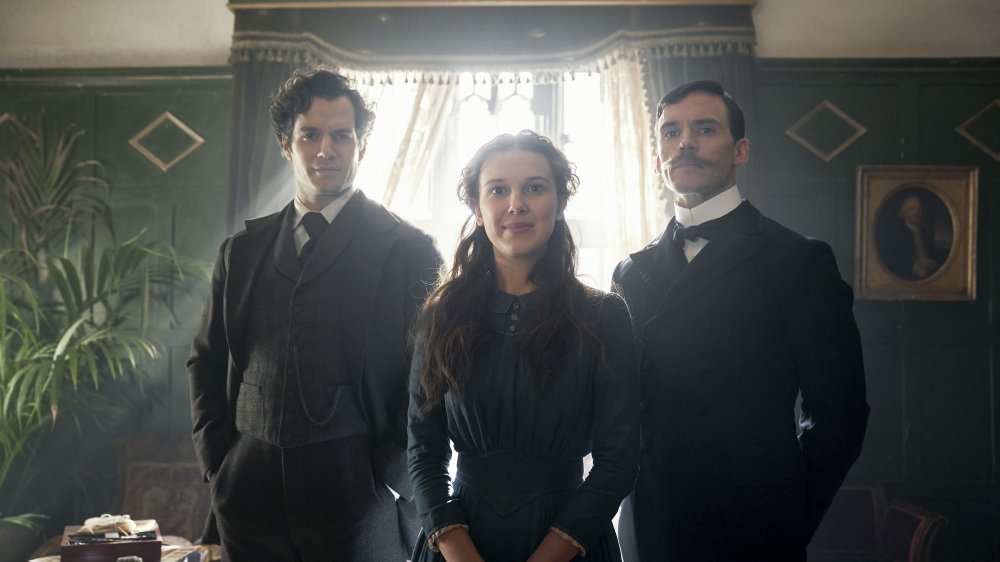What You Didn't Know About The Coded Messages In Enola Holmes
After watching Enola Holmes on Netflix, the new movie about Sherlock Holmes' intelligent and determined younger sister Enola (Millie Bobby Brown), you might have a few questions about fact versus fiction in Victorian England. The film is based on Nancy Springer's book series The Enola Holmes Mysteries, set in 1884, and it premiered on the streamer on September 23, 2020. While Enola is the star of the story, it also features Henry Cavill as the well-known detective Sherlock Holmes.
Enola prides herself on manipulating societal and gender expectations to her advantage. While Enola is obviously a unique young woman with an upbringing that very few teens of the time would have experienced, there are some aspects of her character that are right in line with what people were doing in the Victorian Era. One of these things is the coded messaging she uses to contact her mother. Yes, that's right. Coded messages sent through the newspapers did exist in England at the time — and it was actually quite the rage.
Victorian England's form of flirting
Netflix shared a video deep-diving into this peculiar part of history and its presence in Enola Holmes. England during Queen Victoria's reign may first appear prudish and heavily regulated, but people found ways around all that. One of these crazy rules? Women could apparently "only give a man a handmade gift." They also went everywhere with a chaperone and "couldn't introduce themselves to a man." It's kind of hard to fall in love if you can't talk to the other person!
For young men and women eager for romance and contact with the opposite sex, they found freedom through the newspaper. Aptly called "The Agony Column," a section in most newspapers of the time was devoted to personal messages, coded or otherwise, and there were plenty. People shared their deepest thoughts and feelings here. Readers liked to track relationships as they developed through these messages, rooting for couples, and some would even respond and add their own opinion on what's happening. Think of it like Victorian reality TV. It was all very scandalous.
People coded their messages for privacy like Enola
Like in Enola Holmes, people throughout society in Victorian England tried to stop others from reading their messages by using ciphers, and some were more successful than others. Most used the Caesar cipher, the most common and simplest option. With this technique, all of the letters of the message are shifted a decided number down the alphabet. Once you figure out the number being used, decoding the message is quite easy.
In Enola Holmes, Enola uses a more difficult technique for her messages with her mother Eudoria (Helena Bonham Carter), called a transposition cipher. These cyphers don't change any letters, but simply reorder them. This can be relatively easy to solve, though Enola likely combined it with the polyalphabetic cipher her mother used through the cipher wheel she provided in the book The Language of Flowers. This adds another layer of protection to the message to keep random pesky readers from figuring it out.
Other secret forms of communication in Victorian England
Along with messages in the newspaper, people manipulated society to their advantage in other ways. Fancy, upper class women tended to carry around fans, and many believe that they were used to relay messages to others. For example, a quick opening and shutting of a fan supposedly meant "You are cruel," while other actions were used to relay relationship statuses and directions.
Secret meanings extended to all parts of life. In Enola Holmes, the book Enola gets from her mother explores specific meanings attributed to different types of flowers — another real-world takeaway from Victorian society. Called floriography, it was an elaborate system of meaningful flower symbolism. In Enola Holmes, Enola states that iris means "message," while other flowers were deployed to differing ends. Red tulips supposedly said "I declare my love," while white roses simply meant "I cannot."
The film Enola Holmes may be a work of fiction, but it provides a great look at what life was really like in Victorian London. Enola is smart and innovative, so it's no wonder she utilizes two of the most common forms of secret communication during her adventure. With luck, we'll learn even more about the young detective and her life in an Enola Holmes sequel.



